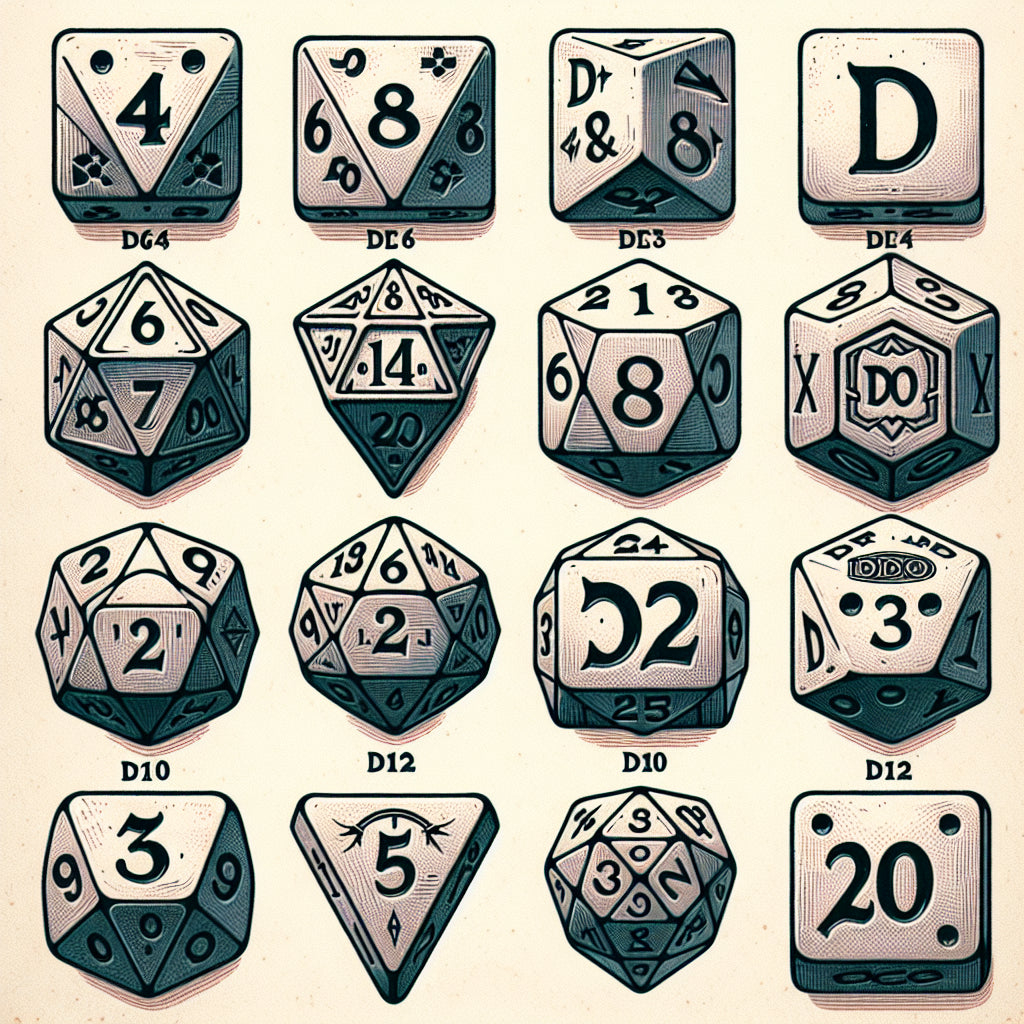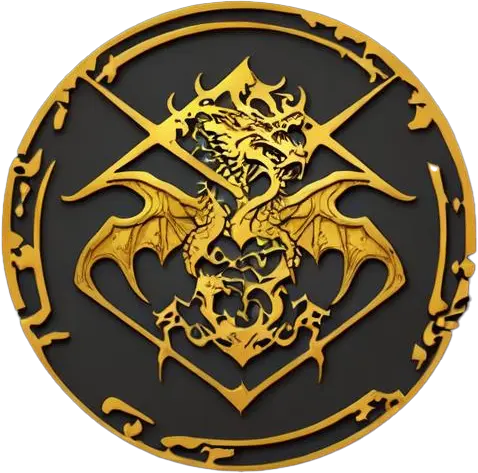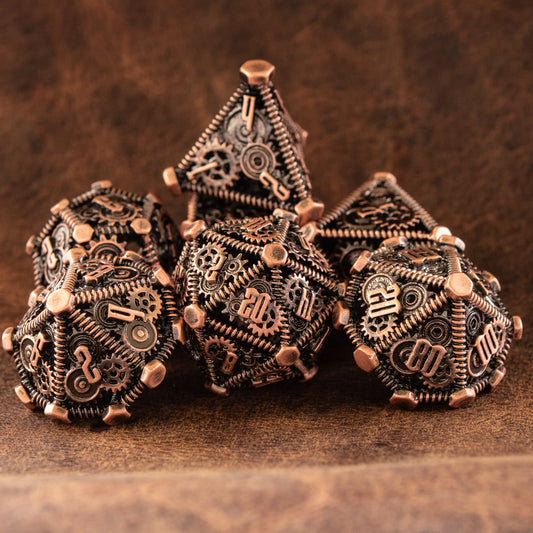
What is Each DND Dice Used For?
Share
What is Each DND Dice Used For?
Introduction
In the fantastical world of Dungeons & Dragons (D&D), dice play a pivotal role in shaping the narrative and determining the outcomes of various actions. For both seasoned adventurers and newcomers alike, understanding the function of each type of dice is crucial for a seamless and enjoyable gameplay experience. In this article, we will delve into the significance of D&D dice, their importance in gameplay, and provide an overview of the different types of dice used.
The D10 - Versatile in Combat
Description
The D10, or ten-sided dice, is a versatile tool in the D&D arsenal. Unlike the more common six-sided dice, the D10 features numbers ranging from 0 to 9, with the zero representing ten. This unique numbering system can be initially confusing, but it serves a variety of purposes in the game, particularly in combat scenarios.
Usage
- Damage Rolls for Weapons: The D10 is frequently used for determining damage rolls for weapons such as longswords and polearms. Its higher range allows for more impactful damage outcomes.
- Hit Dice for Specific Classes: Fighters, rangers, and paladins use the D10 as their hit dice, reflecting their robust health and resilience in battle.
- Percentile Rolls: When paired with another D10, the dice can be used to perform percentile rolls, which are essential for determining probabilities and random events within the game.
The D12 - For Hard-Hitting Effects
Description
The D12, or twelve-sided dice, is one of the larger and less frequently used dice in D&D. Its unique dodecahedral shape and higher number range make it ideal for scenarios that require significant impact and power.
Usage
- Damage Rolls for Heavy Weapons: The D12 is primarily used for calculating damage from heavy weapons like greataxes. Its ability to produce higher damage values makes it perfect for these formidable tools.
- Hit Dice for Barbarians: Barbarians utilize the D12 as their hit dice, underscoring their role as the toughest and most durable class in the game.
- Certain Spells and Abilities: Some spells and abilities also call for the D12, adding to its specialized but crucial role in gameplay.
The D20 - The Iconic Dice
Description
The D20, or twenty-sided dice, is arguably the most iconic and essential dice in D&D. Its prominence in the game is due to its role in determining the success or failure of a wide range of actions, from attacks to skill checks.
Usage
- Ability Checks: Players roll a D20 to determine the success of ability checks, which cover a broad spectrum of actions such as climbing, swimming, or recalling knowledge.
- Attack Rolls: The D20 is rolled to see if a character's attack hits its target. Modifiers from the character's abilities and proficiencies are added to the roll to determine the outcome.
- Saving Throws: When a character needs to resist a harmful effect, they roll a D20 for their saving throw, adding relevant modifiers to see if they succeed.
- Special Rules: The D20 is also used in special rules like advantage and disadvantage, where players roll two D20s and take the higher or lower result, respectively.
The D8 - The Middle Ground
Description
The D8, or eight-sided dice, serves as a middle ground in terms of damage and hit points. Its octahedral shape makes it distinct and easy to recognize.
Usage
- Damage Rolls for Weapons: Weapons such as longswords and warhammers often use the D8 for damage rolls, providing a balanced range of potential damage.
- Hit Dice for Certain Classes: Rogues, monks, and warlocks use the D8 as their hit dice, reflecting their moderate durability.
- Spell Damage and Other Effects: Many spells and abilities also utilize the D8 for calculating damage or other effects, making it a versatile tool in a player's kit.
Understanding the specific uses of each type of D&D dice not only enhances gameplay but also allows players to make more informed decisions during their adventures. Whether you're rolling for a critical hit with a D20 or calculating spell damage with a D8, each dice type plays a crucial role in bringing the world of Dungeons & Dragons to life.
The D4 - The Smallest Dice
Description
The D4, or four-sided dice, is the smallest and most compact dice in the D&D set. Its tetrahedral shape makes it unique among the polyhedral dice, and it is often recognized for its distinct pyramid-like appearance. Despite its small size, the D4 plays a crucial role in various aspects of the game.
Usage
- Damage Rolls for Small Weapons: The D4 is commonly used for calculating damage for small weapons such as daggers and clubs. Its low range reflects the minimal damage output of these weapons.
- Healing Spells and Minor Buffs: Many healing spells, such as Cure Wounds, and minor buffs utilize the D4 to determine the amount of healing or the extent of the buff provided.
- Random Determination for Minor Effects: The D4 can also be used for random determinations in the game, such as deciding minor effects or outcomes that require a low variability roll.
The D6 - The Most Common Dice
Description
The D6, or six-sided dice, is the most familiar dice to players, as it is commonly used in many traditional board games. Its cubic shape and straightforward numbering make it easy to use and recognize.
Usage
- Damage Rolls for Simple Weapons: The D6 is frequently used for damage rolls for simple weapons like shortswords and handaxes. Its moderate range makes it suitable for a variety of weapons.
- Hit Dice for Wizards and Sorcerers: Wizards and sorcerers, known for their fragile nature, use the D6 as their hit dice, reflecting their lower health points.
- Multiple Rolls for Abilities like Sneak Attack: The D6 is often rolled multiple times for abilities that require cumulative effects, such as the rogue's Sneak Attack, which adds additional D6s as the rogue levels up.
The Percentile Dice (D100)
Description
The percentile dice, often represented by two ten-sided dice (D10s), is used to determine probabilities and random events in the game. One D10 represents the tens digit, and the other represents the ones digit, together producing a result between 1 and 100.
Usage
- Determining Probabilities and Random Events: The percentile dice are essential for determining the likelihood of various events and outcomes, adding an element of chance and unpredictability to the game.
- Rolling for Loot Tables and Chance Encounters: Dungeon Masters (DMs) often use the percentile dice to roll on loot tables and determine the occurrence of random encounters, ensuring a diverse and dynamic gameplay experience.
Conclusion
Understanding the specific uses of each type of D&D dice is fundamental for enhancing the gameplay experience. Each dice type, from the versatile D10 to the iconic D20, plays a unique role in shaping the narrative and outcomes of the game. By mastering the use of these dice, players can make more informed decisions, create more engaging stories, and enjoy a richer, more immersive Dungeons & Dragons experience.
Whether you're a seasoned adventurer or a newcomer to the world of D&D, practicing with different dice and familiarizing yourself with their applications will undoubtedly improve your proficiency in the game. So, gather your dice, embark on epic quests, and let the roll of the dice guide your adventures!
By following this guide, you'll gain a deeper understanding of what each D&D dice is used for, making your gameplay more strategic and enjoyable. If you found this article helpful, feel free to share it with your fellow adventurers and explore more about the fascinating world of Dungeons & Dragons. Happy rolling!

